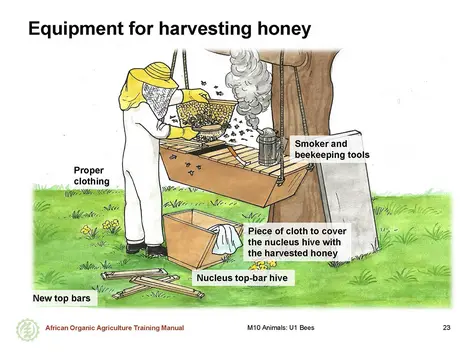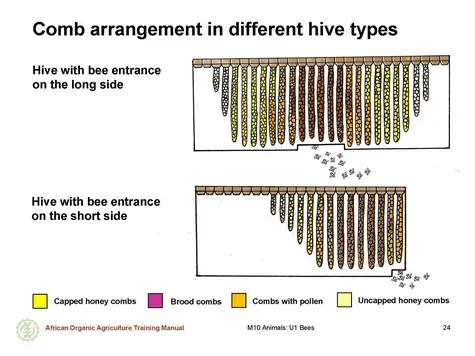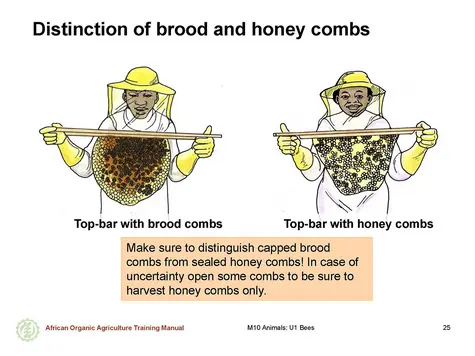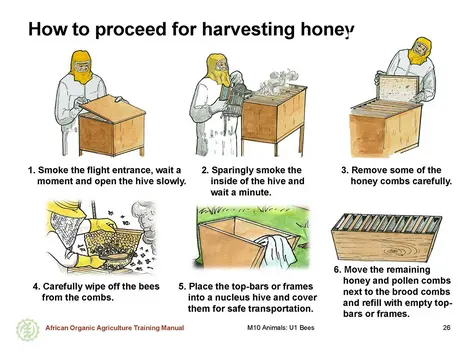Harvesting honey
What is the right time to harvest the honey?
Honey harvesting must be done at the right time using the right equipment. Hives should be harvested in 3 to 4 weeks after onset of the honey flow period or according to the honey maturity in the honey comb. Honey flow period is the time when many plants, which provide nectar, are flowering at the same time. The best time to harvest the honey can be determined through regular inspection of the hives or by knowing the flowering time of the majority of plants which supply nectar. Plants which supply nectar are regularly visited by bees. During the nectar collection period bees are in full activity at the entrance during nectar flow and they tend to crowd the flight entrance especially in the afternoons. A gentle knock along the length of the hive producing a solid sound is an indication that combs are filled with honey; a hollow sound is an indication that combs are empty.
Honey should be harvested from capped honeycombs only showing a whitish wax cover. In these combs the honey is completely sealed from outside air, has a low moisture content and stores well for a long period.
Sharing experiences on harvesting honey
Ask the farmers how they proceed for harvesting ho-ney, in case they keep own bees. Discuss possibilities of improvement.
Harvesting the honey
To harvest the honey, proper equipment and care are required to minimize damage to the bee colony, loss of honey and deterioration of quality.
The required equipment for harvesting includes:
- A smoker, a hive tool, a nucleus top-bar hive, new top-bars and a clean cloth to cover the hive with the harvested combs
- Full protective gear
The recommended procedure for harvesting honey is as follows:
- Make sure to wear the protective gear properly and fire up the smoker.
- Before opening the hive, gently smoke the flight entrance and wait for a moment.
- Open the lid, smoke the top of the hive and wait for another minute.
- Separate the top-bars with a hive tool.
- Inspect the combs and look for the sealed honeycombs. Harvest honey from sealed honeycombs only, which have at least ¾ of all honeycombs sealed. Avoid confusion of honeycombs with capped brood combs.
- Remove the honeycombs carefully from the hive to avoid them breaking.
- Carefully remove the bees from the combs.
- Hang the top-bars with the honeycombs into a nucleus hive to allow safe transportation of the honeycombs.
- Leave at least one third of the honeycombs unharvested in the hive. They serve as food for bees during the period without nectar.
- Remove the propolis next to the honeycombs to easen the placement of new top-bars and place it into a suitable container. Propolis is said to have antibiotic qualities.
- When combs contain a large portion of pollen, it is a sign that you are approaching the brood nest. Do not harvest any brood combs, even if they contain a lot of honey.
- After removing some of the honeycombs, re-arrange the remaining combs by putting the combs with unripe honey immediately behind the last brood or pollen comb. Then fill the hive with empty top-bars on the outer side. This allows the queen to move easily from the brood combs to the new combs and develop the colony from its center.




 tap and then scroll down to the Add to Home Screen command.
tap and then scroll down to the Add to Home Screen command.